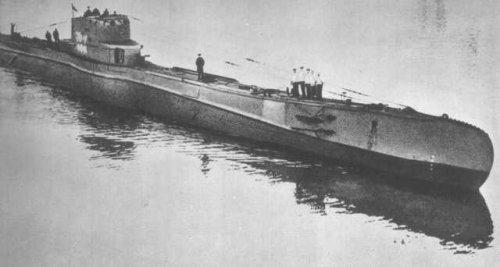
NAVYPEDIA
 Support the project with paypal
Support the project with paypal
Photo

Orzeł 1940 Many thanks to Wolfgang Stöhr for additional information on this page.
Ships
| Name | No | Yard No | Builder | Laid down | Launched | Comp | Fate |
|---|---|---|---|---|---|---|---|
| Orzeł | 205 | De Schelde, Vlissingen, Netherlands | 8/1936 | 15.1.1938 | 2/1939 | lost 5-6/1940 | |
| Sęp | 196 | Rotterdamsche Droogdok Mij, Netherlands | 11/1936 | 17.10.1938 | 4/1939 | interned in Sweden 17.9.1939 - 10.1945, stricken 9.1969 |
Technical data
| Displacement standard, t | 1100 |
|---|---|
| Displacement normal, t | 1473 / 1650 |
| Length, m | 84.0 |
| Breadth, m | 6.70 |
| Draught, m | 4.17 |
| No of shafts | 2 |
| Machinery | 2 Sulzer diesels / 2 BBC electric motors |
| Power, h. p. | 4740 / 1100 |
| Max speed, kts | 19.4 / 9 |
| Fuel, t | diesel oil 123 |
| Endurance, nm(kts) | 7000(10) / 100(5) |
| Armament | 1 x 1 - 105/41 Bofors QF, 1 x 2 - 40/56 Bofors, 1 x 2 - 13.2/76, 12 - 550 TT (4 bow, 4 stern, 2 x 2 trainable, 20, can use 533mm torpedoes) |
| Electronic equipment | presumably sonar |
| Complement | 60 |
| Diving depth operational, m | 80 |
Standard scale images

Orzeł 1940
Graphics
Project history
In the early thirties in Poland campaign for fund raising among the population on building of big submarine was developed. To the middle of 1935 the necessary sum has been collected, and submarine, named Orzeł was ordered in Netherlands. Simultaneously on the budget means building of Sęp was ordered. As the starting point in designing Dutch O16 served. In comparison with a predecessor, Polish submarines were larger, faster and had stronger armament. Already on their basis for Dutch Navy subsequently O19 was built.
Double-hulled. Endurance was 90 days. At building welding was widely used. 8 TTs from 12 were placed in the pressure hull, four more out of a pressure hull in two trainable twin mounts fwd and aft from CT. Interesting feature of this class was following: 550mm TTs were possible to launch both 550mm and 533mm torpedoes.
Modernizations
1946, Sęp: was fully rearmed with 1 x 1 - 100/51 B-24PL, 12 - 533 TT (8 bow, 4 stern, 16)
1958, Sęp: - 1 x 1 - 100/51; + radar, new sonar
Naval service
Orzeł at beginning of war escaped to Britain and arrived Rosyth 14.10.1939. Since 25.5.1940 she was lost in the North Sea (on one data, she was lost on 25.5.1940 on British mine, or approximately 8.6.1940 — on German mine).
Sęp was interned 17.9.1939 in Sweden. After war in October, 1945 she returned to Poland.
Many thanks to Wolfgang Stöhr for additional information on this page.
 HOME
HOME FIGHTING SHIPS OF THE WORLD
FIGHTING SHIPS OF THE WORLD POLAND
POLAND SUBMARINES
SUBMARINES ORZEŁ submarines (1939)
ORZEŁ submarines (1939)
